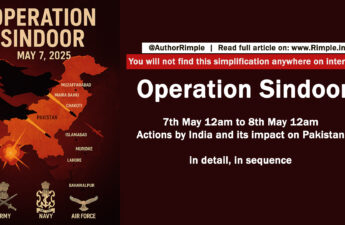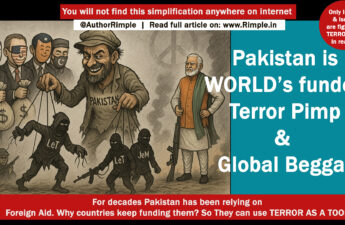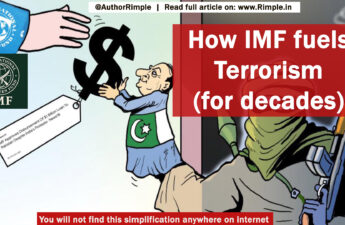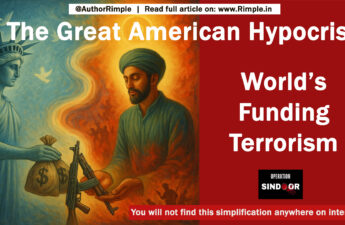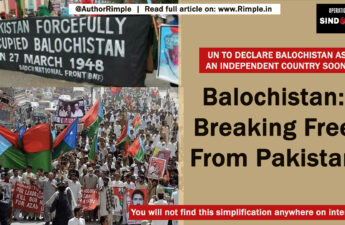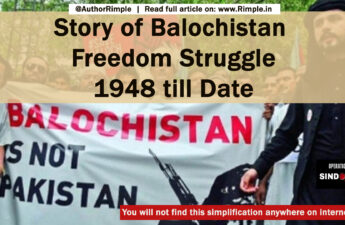There is no excerpt because this is a protected post.
Category: post
Operation Sindoor: India’s Uncompromising Retribution Against Terrorism on May 7, 2025
On April 22, 2025, the tranquil Baisaran Valley near Pahalgam, Jammu and Kashmir, was scarred by a barbaric terrorist attack that claimed 26 innocent lives, including 25 Indian tourists and one Nepali national. The Resistance Front (TRF), a front for the Pakistan-based Lashkar-e-Taiba (LeT), initially claimed responsibility before retracting, but India’s intelligence agencies traced the attack’s origins to Pakistan’s Inter-Services…
Pinaka Missile: India’s Shiva Bow Reborn
Imagine a colossal firecracker, infused with the divine power of Shiva’s bow, ready to defend the nation. This is the Pinaka missile system—a mighty, precise, and proudly Indian weapon named after the legendary Pinaka, the celestial bow of Shiva. In Hindu Pauranic History, this bow was so powerful that only the greatest warriors could wield it, and it was famously…
Pakistan: The World’s Beggar and Terror’s Pimp
You may be reading this article from any country. But if you are a common man, who pays taxes, know how your politicians use your tax money to fund terrorism, fuel terrorism. Especially if you are from US. It’s time that a common from every country in the world speaks against terrorism because politicians and bureaucrats will save themselves and…
International Mujahideen Fund: How the IMF Fuels Terrorism While India Fights Alone
You may be reading this article from any country. But if you are a common man, who pays taxes, know how your politicians use your tax money to fund terrorism, fuel terrorism. Especially if you are from US. It’s time that a common from every country in the world speaks against terrorism because politicians and bureaucrats will save themselves and…
The Great American Hypocrisy: Funding Pakistan’s Terror Factory While Preaching Peace
Ever wondered how these Terrorists have so much funds to carry out terrorism, weapons, latest tech, access to locations via satellites, and all Terrorists have many properties, living in luxuries and all facilities?US and many Countries in the world fund it. This article focuses more on US aids given to Terrorist country Pakistan. US citizens, here’s your tax money is…
Balochistan: Breaking Free from Pakistan
The Balochistan freedom struggle, a decades-long battle against Pakistan’s oppression, has reached a boiling point since the April 22, 2025, Pahalgam attack in Indian-administered Kashmir. This brutal attack, which killed 26 civilians, mostly Hindu tourists, was blamed on Pakistan-backed militants. While Pakistan denied involvement, the Baloch freedom fighters seized the moment to escalate their fight, launching a series of daring…
Balochistan’s Fight for Freedom: A Story of Struggle, Betrayal, and Hope
Balochistan, Pakistan’s largest province, is a land of rugged mountains, vast deserts, and a coastline that stretches along the Arabian Sea. It’s a place rich in natural resources like gas, oil, and minerals, yet it remains one of the poorest and least developed regions in Pakistan. For decades, the Baloch people have been fighting for freedom, driven by a deep…
Indian Navy’s Thunderous Strike on Karachi Port: A Game-Changer in the Arabian Sea!
Buckle up, folks! The Indian Navy just pulled off a jaw-dropping move that’s got Pakistan scrambling like a cat on a hot tin roof. On May 9, 2025, India’s mighty naval forces, led by the colossal INS Vikrant, unleashed a barrage of missiles on Karachi Port, Pakistan’s economic lifeline. This wasn’t just a slap on the wrist—it was a full-on…

